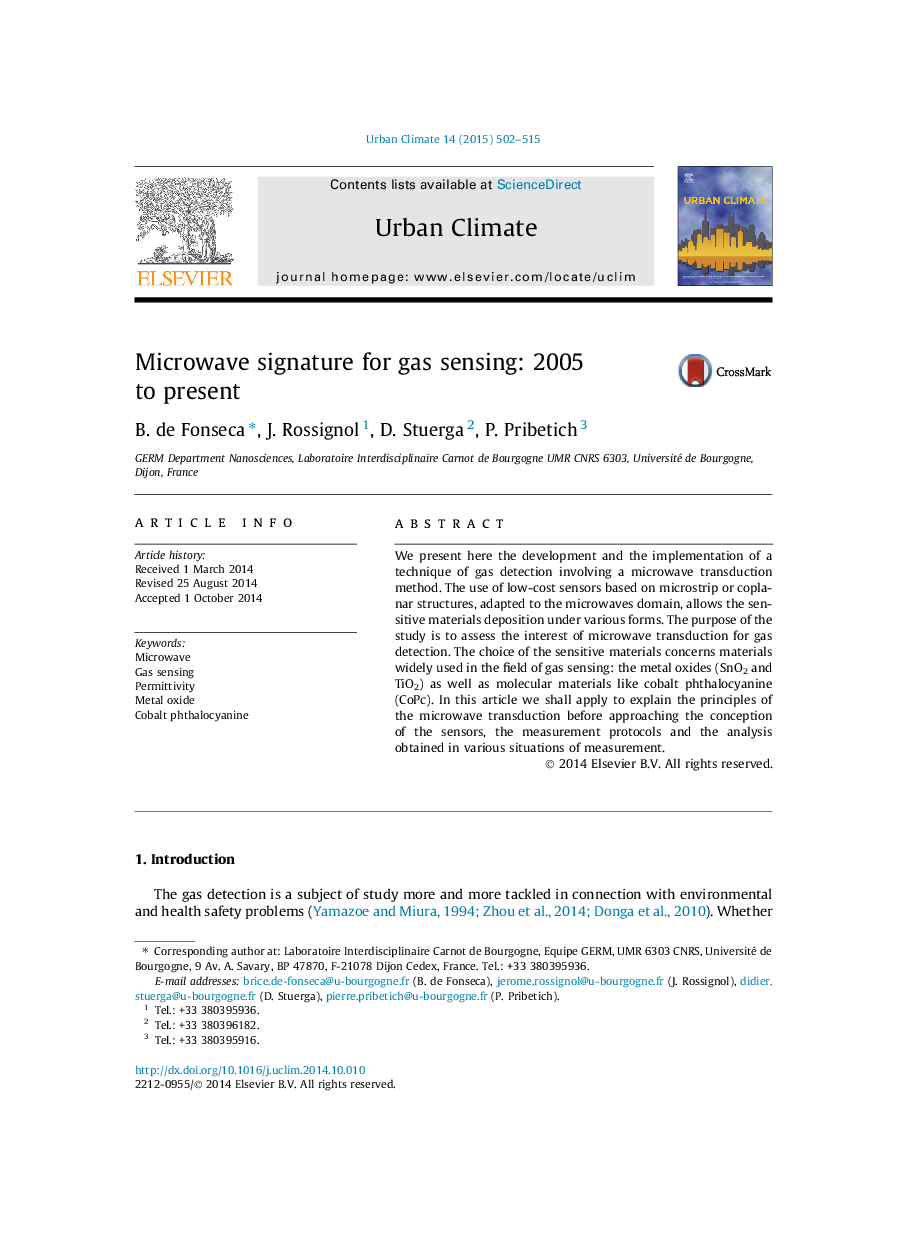| Article ID | Journal | Published Year | Pages | File Type |
|---|---|---|---|---|
| 143690 | Urban Climate | 2015 | 14 Pages |
•A gas sensor can be seen as a sensitive material associated to a transduction method.•The microwave gas sensing evaluates the sensitive material permittivity evolution.•Low cost manufacture of the sensors.•Use of metal oxides and phthalocyanine according to volumic and surfacic approaches.•A resolution lower than 100 ppm for NH3 detection is obtained at room temperature.
We present here the development and the implementation of a technique of gas detection involving a microwave transduction method. The use of low-cost sensors based on microstrip or coplanar structures, adapted to the microwaves domain, allows the sensitive materials deposition under various forms. The purpose of the study is to assess the interest of microwave transduction for gas detection. The choice of the sensitive materials concerns materials widely used in the field of gas sensing: the metal oxides (SnO2 and TiO2) as well as molecular materials like cobalt phthalocyanine (CoPc). In this article we shall apply to explain the principles of the microwave transduction before approaching the conception of the sensors, the measurement protocols and the analysis obtained in various situations of measurement.
